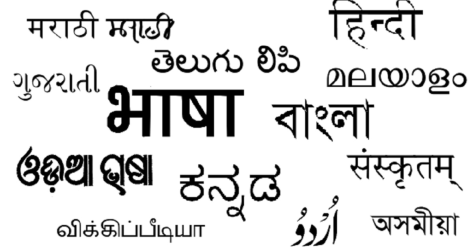 Recently, the Telangana government has decided to make all educational institutions, both in private and public, teach Telugu as a compulsory subject from Classes 1 to 12.
Recently, the Telangana government has decided to make all educational institutions, both in private and public, teach Telugu as a compulsory subject from Classes 1 to 12.
The government also made it clear that only those educational institutions teaching Telugu as a compulsory subject would be given recognition and permissions to function. For those opting for Urdu, it should be offered as an optional. The government has also decided to instruct all organisations to display their signboards in Telugu too.
There is neither politics nor any language chauvinism in the latest decision. The government has taken the decision only to protect the Telugu language, which is on the verge of extinction as the present generations, in their craze for English education, are forgetting their mother tongue.
In the wake of globalisation, the domains of use of some languages are shrinking with the result that many Indian languages have become threatened and even endangered.
However, according to UNESCO, well-planned and implemented language policies can bolster the ongoing efforts of speaker communities to maintain or revitalise their mother tongues and pass them on to younger generations.
The Unesco Atlas of World’s Languages in Danger 2010 lists around 2,500 endangered languages around the world. India tops the list with 197 endangered languages, followed by the US (191) and Brazil (190).
According to UNESCO, 197 languages in India are reported to be endangered of which 81 are vulnerable followed by definitely endangered (63), severely endangered (6), critically endangered (42) and already extinct (5). Andaman and Nicobar tops the list with 11 critically endangered languages, mainly tribal dialects.
Among the states, it is Manipur with seven languages, followed by Himachal Pradesh with 4 endangered languages. According to (UNESCO), any language spoken by less than 10,000 persons is considered “potentially endangered”. Not every potentially endangered language necessarily faces the threat of immediate extinction.
However, that number indicates a threshold. Indian languages are facing more extinction than worldwide languages, this is because English is thriving and is used widely by the emerging Indian generation, which is one of the reasons leading to the threat of extinction of native or regional languages.
English has become the language of knowledge and employability, as well as the primary language of the internet. The major content of the digital sphere is now in English, and, therefore, other languages have been marginalised.
People have started considering native languages as kitchen languages. Indians do not find it necessary to learn or write in their mother tongue. A language without a script is not necessarily a dialect. Several mighty languages in existence today do not have their own scripts.
English, French, Spanish can all be counted in this class. The difference between the two is more a matter of structural identity. According to the People’s Linguistic Survey of India (PLSI), over the last 50 years, the world’s Hindi-speaking population has increased from 260 million to 420 million.
Over the same period, the English-speaking population has gone from 320 million to 480 million. However, the growth of Hindi, English and other major languages within India has come at a price: Around 250 languages in India have disappeared in the last 50 years. A language dies when its speakers die. For example, a language of Andaman and Nicobar islands, namely, Aka-Bo died recently when its last speaker died in 2010.
Although, the globalisation is not directly killing local languages, but it is affecting languages in the sense that many languages under pressure are losing oral literature and words related to culture, especially, food items, dress and ornaments, rituals, flora and fauna. The Central Institute of Indian Languages (CIIL) states that globalisation is not the cause of language death.
The Union Government has launched “Protection and Preservation of Endangered Languages of India (SPPEL)”, which became in February 2014. Under this scheme, the Central Institute of Indian Languages (CIIL), Mysore, works on protection, preservation and documentation of all the mother tongues/languages of India spoken by less than 10,000 people in the country. The scheme will be implemented by the CIIL in coordination with universities across the country. It will identify, document and take measures to protect the endangered languages.
However, there has ben no proper enumeration of languages in India for nearly a century. The last comprehensive exercise was carried out by George Grierson, an Irish linguistic scholar who carried out the first linguistic surveys in India between 1894 and 1928, listing 189 languages and several hundred dialects
Posted on :
Oct 04, 2017